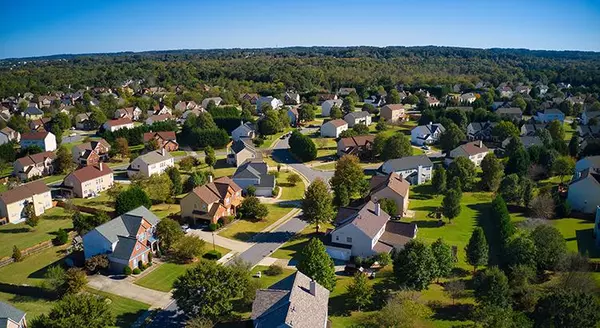Moving Closer to Family: Stay Connected While Keeping Your Independence
Moving Closer to Family: Stay Connected While Keeping Your Independence

Image via Pexels
Relocating to be near family can feel like both a homecoming and a new beginning. You gain proximity to loved ones, shared holidays, and built-in support — yet you may also face the challenge of maintaining boundaries, personal space, and professional growth in a familiar environment.
Whether you’re considering a move across town or across the country, the goal is the same: stay connected without losing your sense of self.
TL;DR
Moving closer to family offers emotional support, community, and convenience — but success depends on intentional boundaries, the right neighborhood, and continued self-development.
Key steps include researching the area, designing a communication rhythm, balancing shared time with autonomy, and using transitions to refresh your career and goals.
Choosing the Right Neighborhood
Your neighborhood can make or break the balance between connection and independence.
Before signing a lease or purchase agreement, consider:
Checklist: Neighborhood Fit
- Distance from family: close enough for spontaneous visits, far enough for privacy.
- Commute routes: ensure access to work, childcare, and your own social outlets.
- Local amenities: gyms, co-working spaces, and walking trails maintain independence.
- Demographic mix: diverse, intergenerational communities encourage new friendships.
- Transportation and safety data: review City-Data or Niche for updated stats.
If you’re also considering career alignment during your move, check this out: online programs for earning a business bachelor’s degree are designed for working adults adapting to life transitions and new cities.
Building Healthy Boundaries Without Distance
Proximity can intensify family expectations. You’ll want to create relational clarity early.
How-To: Setting Emotional and Practical Boundaries
- Define your “open door” times – Schedule visits or dinners intentionally.
- Communicate routines – Let relatives know your work hours or downtime.
- Share expectations – Discuss caregiving, childcare, or shared errands before they become assumptions.
- Protect alone time – Use personal rituals (morning walks, library afternoons) as consistent independence anchors.
- Establish digital norms – Mutually agree on texting or drop-by etiquette.
Boundaries are not walls; they are clarity structures.
Making the Move Work for Career and Growth
A relocation is also a moment for reinvention. Whether you’re freelancing, studying, or switching careers, proximity to family can provide a support buffer — freeing you to focus on advancement.
Tips for Career Renewal
- Explore hybrid or remote-first roles on FlexJobs.
- Join local meetups on Meetup or professional Slack groups.
- Keep a home office or designated workspace to separate “family life” from “work life.”
- Build visibility by contributing to industry discussions on Medium.
Family Integration Strategy: Connection Without Overlap
A useful mental model is “interlocking circles” — overlapping in shared experiences but distinct at the center.
|
Balance Dimension |
Family Connection Action |
Independence Action |
|
Emotional |
Weekly meal or call |
Journaling or therapy check-ins |
|
Physical |
Shared weekend hike |
Solo gym or art class |
|
Financial |
Occasional gift exchange |
Separate budgets and payments |
|
Professional |
Mentoring younger relatives |
Maintaining your own career identity |
|
Social |
Family barbecues |
Personal friend groups |
Emotional Transition Management
Every relocation carries emotional logistics. Homesickness for your “old independence” is normal.
Quick Grounding Checklist
- Reconnect with personal hobbies early.
- Keep a “you day” once a week.
- Use nature or exercise as mental reset tools.
- Build local micro-communities — volunteer, take classes, join co-ops.
- Keep learning something unrelated to family — this sustains autonomy.
For mindfulness or change-management resources, visit Mindful.org or Verywell Mind.
Integrating the Move Into Long-Term Life Design
The move should align with your values architecture, not just proximity. Use it as a chance to realign how you live, work, and connect.
Framework: The 3-Layer Design
- Inner Layer (Self): identity, goals, boundaries.
- Middle Layer (Family): shared time, empathy, flexibility.
- Outer Layer (Community): career, friendships, contribution.
By designing across these three layers, you ensure every decision supports both closeness and individuality. For planning tools, explore Notion templates or Trello boards.
Featured Resource: Community-Building
Staying near family doesn’t mean your social circle should shrink. Building your own support network reinforces autonomy while deepening your sense of place. One powerful tool for this is Idealist — a platform that connects people with local volunteer opportunities based on interests, skills, and availability.
Volunteering not only expands your social ecosystem but also strengthens emotional resilience and professional confidence. It’s a practical way to maintain independence while contributing meaningfully to your new community.
Frequently Asked Questions (FAQ)
Q: How close is “too close” when living near family?
A: It depends on your routines. Many people thrive within a 15–30-minute drive; closer proximity may require clearer boundaries.
Q: How do I politely say no to spontaneous visits?
A: Use gentle clarity: “I’d love to see you — let’s plan for Saturday so I can give you my full attention.”
Q: Can moving near family affect my career negatively?
A: Only if proximity dilutes focus. Define work zones and communicate priorities early to prevent overlap.
Q: What’s the best way to meet new people after a move?
A: Start with local community events, co-working hubs, or specialized classes. Familiar faces build quickly into new circles.
Glossary
- Boundary: A respectful, clearly stated personal limit that maintains autonomy.
- Proximity Bias: The assumption that closeness equals obligation — a mental trap to be aware of.
- Hybrid Living: Combining shared and solo spaces for lifestyle flexibility.
- Transition Window: The first 3–6 months after relocation, when habits form most easily.
- Micro-Community: Small, interest-based social clusters that reinforce independence.
Moving closer to family can be a profound act of connection — but independence requires design. Choose your neighborhood intentionally, communicate transparently, and nurture both growth and grounding.
Handled wisely, proximity strengthens relationships without diminishing individuality — letting you belong without becoming bound.
Discover the unparalleled expertise of Your Home Sold Guaranteed Realty - Brenda Bianchi & Team and let us guide you to success with our ‘Old Fashioned Service’ and cutting-edge technology in Pinellas County’s real estate market!
Recent Posts











